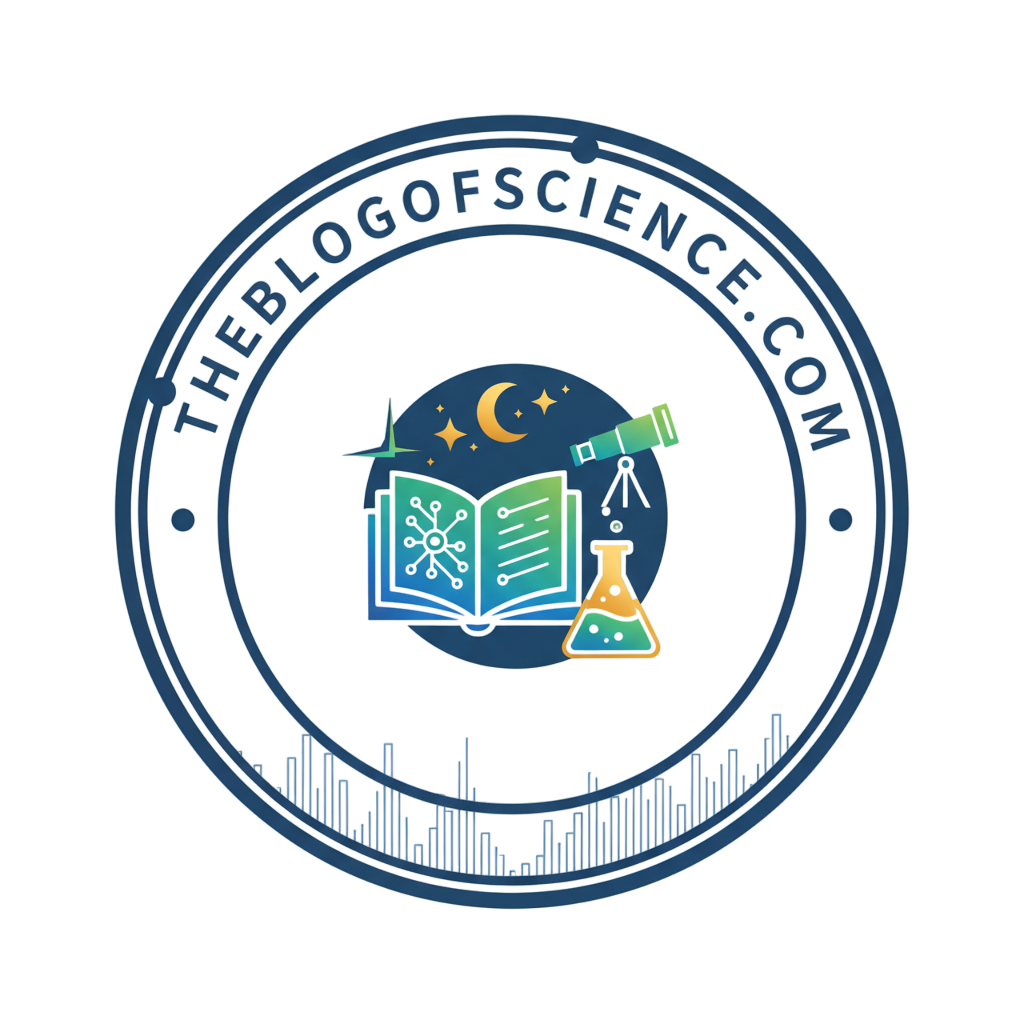The Quantum Revolution: Understanding the Subatomic World

The Quantum mechanics represents the most fundamental and accurate framework in modern physics for describing the behavior of matter and energy at microscopic scales. This revolutionary theory emerged in the early 20th century when classical physics failed to explain phenomena at the atomic and subatomic levels. What exactly does quantum mechanics study? It examines how particles like atoms, electrons, and photons behave under conditions where traditional Newtonian physics no longer applies. The theory has completely transformed our understanding of reality, introducing concepts that often defy common sense but have been repeatedly verified through rigorous experimentation.
- Historical Foundations: When Did Quantum Theory Emerge?
- The Quantum Realm: Where Does Quantum Behavior Occur?
- Key Figures: Who Revolutionized Quantum Physics?
- Fundamental Principles: Why Does Quantum Mechanics Defy Intuition?
- Quantum Formalism: How Do We Describe Quantum Systems?
- Quantum Applications: Which Technologies Rely on Quantum Mechanics?
- Quantum Interpretations: Whose Explanation of Quantum Reality Prevails?
- Quantum Entanglement: How Does This “Spooky” Phenomenon Work?
- Table: Fundamental Quantum Concepts and Their Significance
- Quantum Frontiers: What Challenges Remain in Quantum Physics?
- Quantum Impact: How Has Quantum Mechanics Transformed Science?
- Frequently Asked Questions (FAQ)
The development of quantum mechanics marked a paradigm shift in scientific thinking. Where classical physics offered deterministic predictions, quantum theory introduced inherent probabilities and uncertainties. This new framework successfully explains everything from the stability of atoms to the workings of semiconductors in modern electronics. The implications extend beyond physics, influencing philosophy, technology, and our very conception of reality. As we explore this fascinating domain, we encounter strange phenomena like wave-particle duality, quantum entanglement, and the uncertainty principle—concepts that continue to challenge our intuition while driving technological innovation.
Historical Foundations: When Did Quantum Theory Emerge?
The birth of quantum mechanics can be traced to specific historical moments when classical physics encountered insoluble problems. When did scientists first recognize the need for a new physics? The quantum revolution began in 1900 when Max Planck introduced the radical idea that energy is quantized to solve the ultraviolet catastrophe in blackbody radiation. This notion that energy comes in discrete packets, or quanta, contradicted the classical view of energy as continuous.
Albert Einstein further advanced quantum theory in 1905 by proposing that light itself consists of discrete particles, later called photons, explaining the photoelectric effect. Niels Bohr then developed his atomic model in 1913, suggesting electrons occupy specific energy levels around the nucleus. The 1920s witnessed the full emergence of modern quantum mechanics through the work of Schrödinger, Heisenberg, Dirac, and others who developed the mathematical formalism that remains the foundation of the theory today. This period of intense creativity established a completely new way of understanding the physical world at its most fundamental level.
The Quantum Realm: Where Does Quantum Behavior Occur?
Quantum phenomena manifest primarily at extremely small scales, though their effects can be observed in our macroscopic world. Where exactly does quantum behavior become significant? The strange rules of quantum mechanics govern the behavior of particles at the nanoscale—typically distances smaller than 100 nanometers, involving individual atoms, electrons, and photons. At this scale, the classical certainty of Newtonian physics gives way to quantum probability and wave-like behavior.
While quantum effects are most pronounced in the microscopic realm, they aren’t completely absent from our everyday experience. How do quantum effects appear in macroscopic objects? Superconductivity, where materials lose all electrical resistance at low temperatures, represents a macroscopic quantum phenomenon. Laser technology, MRI machines, and the specific colors of neon signs all rely on quantum principles. Even the simple act of sunlight warming the Earth involves quantum processes, as photons transfer energy through quantized interactions. The boundary between quantum and classical worlds remains an active area of research, with scientists continually discovering new ways that quantum behavior manifests across different scales.
Key Figures: Who Revolutionized Quantum Physics?
The development of quantum mechanics involved numerous brilliant minds whose collective work transformed our understanding of physics. Who were the principal architects of quantum theory? Max Planck, Albert Einstein, Niels Bohr, Werner Heisenberg, Erwin Schrödinger, Paul Dirac, and Wolfgang Pauli made foundational contributions that established the mathematical and conceptual framework of quantum physics.
Each pioneer addressed different aspects of the emerging theory. Heisenberg formulated matrix mechanics and the uncertainty principle, while Schrödinger developed his famous wave equation describing how quantum states evolve over time. Dirac reconciled quantum mechanics with relativity and developed the bra-ket notation that streamlined quantum calculations. Bohr championed the Copenhagen interpretation, emphasizing the role of measurement and probability. These scientists, along with many others, engaged in intense debates about the meaning and implications of quantum theory, discussions that continue to resonate in modern physics and philosophy.
Fundamental Principles: Why Does Quantum Mechanics Defy Intuition?
Quantum mechanics introduces concepts that appear strange because they contradict our everyday experiences governed by classical physics. Why does quantum behavior seem so counterintuitive? The theory operates according to principles that have no direct analogs in the macroscopic world we inhabit, including wave-particle duality, superposition, and quantum entanglement.
Wave-particle duality means that quantum entities like electrons and photons display both particle-like and wave-like properties depending on how we observe them. Superposition allows particles to exist in multiple states simultaneously until measured. Quantum entanglement creates mysterious connections between particles where measuring one instantly affects its partner, regardless of distance. These phenomena emerge from the mathematical structure of quantum mechanics and have been repeatedly confirmed through experiments. While they challenge our classical intuition, they represent the actual behavior of matter and energy at fundamental levels, forcing us to expand our understanding of reality itself.
Quantum Formalism: How Do We Describe Quantum Systems?
The mathematical framework of quantum mechanics provides precise tools for predicting and understanding quantum behavior. How do physicists mathematically represent quantum states? The state of a quantum system is described by a wave function, typically represented by the Greek letter ψ (psi), which contains all information about the system. Schrödinger’s equation governs how this wave function evolves over time, playing a role analogous to Newton’s laws in classical physics.
Physical observables like position, momentum, and energy correspond to mathematical operators in quantum theory. When these operators act on the wave function, they yield possible measurement outcomes and their probabilities. The theory introduces complex numbers and Hilbert spaces—abstract vector spaces where quantum states reside. This mathematical structure, while abstract, generates incredibly accurate predictions that have been confirmed to extraordinary precision. From the specific wavelengths of light emitted by atoms to the magnetic properties of materials, quantum formalism consistently matches experimental observations.
Quantum Applications: Which Technologies Rely on Quantum Mechanics?
The practical applications of quantum mechanics permeate modern technology, often in ways invisible to users. Which everyday devices depend on quantum principles? Transistors, the fundamental building blocks of all modern electronics, operate according to quantum rules governing electron behavior in semiconductors. Lasers, which produce coherent light through stimulated emission, represent a direct application of quantum theory.
Other quantum technologies include MRI scanners that use nuclear magnetic resonance—a quantum phenomenon—to image internal body structures. Flash memory chips, LED lights, and solar cells all incorporate quantum effects in their operation. Looking forward, quantum computing aims to harness superposition and entanglement to solve problems intractable for classical computers. Quantum cryptography uses quantum principles to create theoretically unbreakable encryption. These applications demonstrate how theoretical insights about the subatomic world have transformed our technological capabilities, with future quantum technologies promising even more revolutionary advances.
Quantum Interpretations: Whose Explanation of Quantum Reality Prevails?
Despite its empirical success, quantum mechanics continues to generate debate about what the theory actually tells us about reality. Whose interpretation best explains quantum phenomena? The Copenhagen interpretation, developed primarily by Bohr and Heisenberg, remains the most widely taught view, emphasizing that quantum systems don’t have definite properties until measured and that the wave function collapses during measurement.
Alternative interpretations offer different perspectives. The many-worlds interpretation suggests that all possible outcomes of quantum measurements actually occur in separate, branching universes. Pilot-wave theory proposes that particles have definite trajectories guided by a wave function. Quantum Bayesianism treats quantum states as representing knowledge rather than objective reality. Each interpretation accounts for the same mathematical formalism and experimental results but carries different philosophical implications about the nature of reality, consciousness, and the role of observation in physics.
Quantum Entanglement: How Does This “Spooky” Phenomenon Work?
Quantum entanglement represents one of the most mysterious yet fundamental aspects of quantum mechanics. How does entanglement create connections between particles? When particles become entangled, their quantum states become interdependent, regardless of the distance separating them. Measuring one particle instantly determines the state of its partner, a phenomenon Einstein famously called “spooky action at a distance.”
This non-local connection doesn’t allow faster-than-light communication but does enable correlations that exceed what’s possible in classical physics. Entanglement has been experimentally verified through Bell test experiments that consistently violate classical limits. The phenomenon now forms the basis for emerging technologies like quantum computing and quantum cryptography. Research continues to explore the limits and applications of entanglement, with recent experiments demonstrating entanglement between increasingly large objects and over record distances, further confirming this strange but essential feature of our quantum world.
Table: Fundamental Quantum Concepts and Their Significance
| Quantum Concept | Discovery/Proponent | Key Feature | Practical Significance |
|---|---|---|---|
| Quantization | Max Planck (1900) | Energy exists in discrete units | Explains atomic spectra, blackbody radiation |
| Wave-Particle Duality | Einstein, de Broglie | Particles exhibit wave-like properties | Electron microscopy, quantum imaging |
| Uncertainty Principle | Werner Heisenberg (1927) | Fundamental limits on simultaneous measurement | Scanning tunneling microscopes, quantum limits |
| Schrödinger Equation | Erwin Schrödinger (1926) | Describes quantum state evolution | Basis for quantum chemistry, material science |
| Quantum Entanglement | Einstein, Podolsky, Rosen (1935) | Non-local correlations between particles | Quantum computing, quantum cryptography |
| Quantum Tunneling | Friedrich Hund (1927) | Particles penetrating energy barriers | Nuclear fusion, flash memory, scanning microscopes |
Quantum Frontiers: What Challenges Remain in Quantum Physics?
Despite a century of development, quantum mechanics continues to present profound challenges and open questions. What major problems are quantum physicists still trying to solve? The measurement problem—understanding why quantum superpositions collapse to definite states during measurement—remains unresolved. Reconciling quantum mechanics with general relativity to create a theory of quantum gravity represents perhaps the greatest challenge in theoretical physics.
Other active research areas include understanding quantum decoherence—how quantum systems interact with their environment to appear classical—and exploring the quantum nature of space and time itself. The development of practical quantum computers faces significant technical hurdles related to maintaining quantum coherence. Cosmological questions about the quantum origins of the universe and the role of quantum effects in black holes continue to drive theoretical and experimental work. These frontiers demonstrate that while quantum mechanics has been spectacularly successful, it continues to inspire new questions and research directions.
Quantum Impact: How Has Quantum Mechanics Transformed Science?
The influence of quantum mechanics extends far beyond physics, affecting numerous scientific disciplines and philosophical perspectives. How has quantum theory changed our approach to science? The theory introduced probability and uncertainty as fundamental features of nature, replacing the deterministic worldview of classical physics. This shift influenced fields from chemistry to biology, where quantum effects play crucial roles in molecular bonding, photosynthesis, and even bird navigation.
In chemistry, quantum principles explain the periodic table and chemical bonding through quantum chemistry. In biology, quantum effects may operate in enzyme catalysis and photosynthesis. The theory has inspired new philosophical perspectives on reality, causality, and the limits of knowledge. Technological spinoffs continue to emerge, with quantum sensors, quantum materials, and quantum information science representing active research frontiers. The quantum revolution that began a century ago continues to unfold, with its full implications still emerging across science, technology, and philosophy.
Frequently Asked Questions (FAQ)
1. What is quantum superposition?
Quantum superposition is the principle that a quantum system can exist in multiple states or locations simultaneously until it is measured, at which point it “collapses” to a single state.
2. When do quantum effects become important?
Quantum effects dominate at the atomic and subatomic scale, typically for particles smaller than atoms and at very low temperatures, though some quantum phenomena appear in macroscopic systems.
3. Where is quantum mechanics used in everyday life?
Quantum mechanics enables numerous technologies including lasers, transistors, MRI scanners, LED lights, and solar cells—all fundamental to modern electronics, medicine, and energy production.
4. Who are the current leaders in quantum research?
Leading quantum research occurs at institutions worldwide, including MIT, Harvard, Caltech, Max Planck Institutes, and technology companies like Google, IBM, and Microsoft pursuing quantum computing.
5. Why is quantum mechanics considered strange or counterintuitive?
Quantum behavior contradicts everyday experience because it allows particles to be in multiple places at once, connected over distance through entanglement, and influenced by observation in ways classical objects are not.
6. Whose interpretation of quantum mechanics is most accepted?
The Copenhagen interpretation remains most widely accepted, though multiple interpretations exist including many-worlds, pilot-wave theory, and quantum Bayesianism, each with prominent supporters.
7. Which quantum phenomenon has the most immediate practical applications?
Quantum tunneling has immediate applications in flash memory, scanning tunneling microscopes, and radioactive decay, while entanglement is crucial for emerging quantum technologies.
8. How does quantum computing differ from classical computing?
Quantum computers use qubits that can represent multiple states simultaneously through superposition and leverage entanglement for parallel processing, potentially solving certain problems exponentially faster than classical computers.
Keywords: Quantum Mechanics, Energy, Atom, Relativity, Black Hole, Big Bang, Dark Matter, Force, Mass, Gravity, Matter, Density, Physics, Universe, Reality
Tags: #QuantumMechanics #Physics #Science #QuantumPhysics #TheoreticalPhysics #Universe #Reality #Atom #Energy #Research






